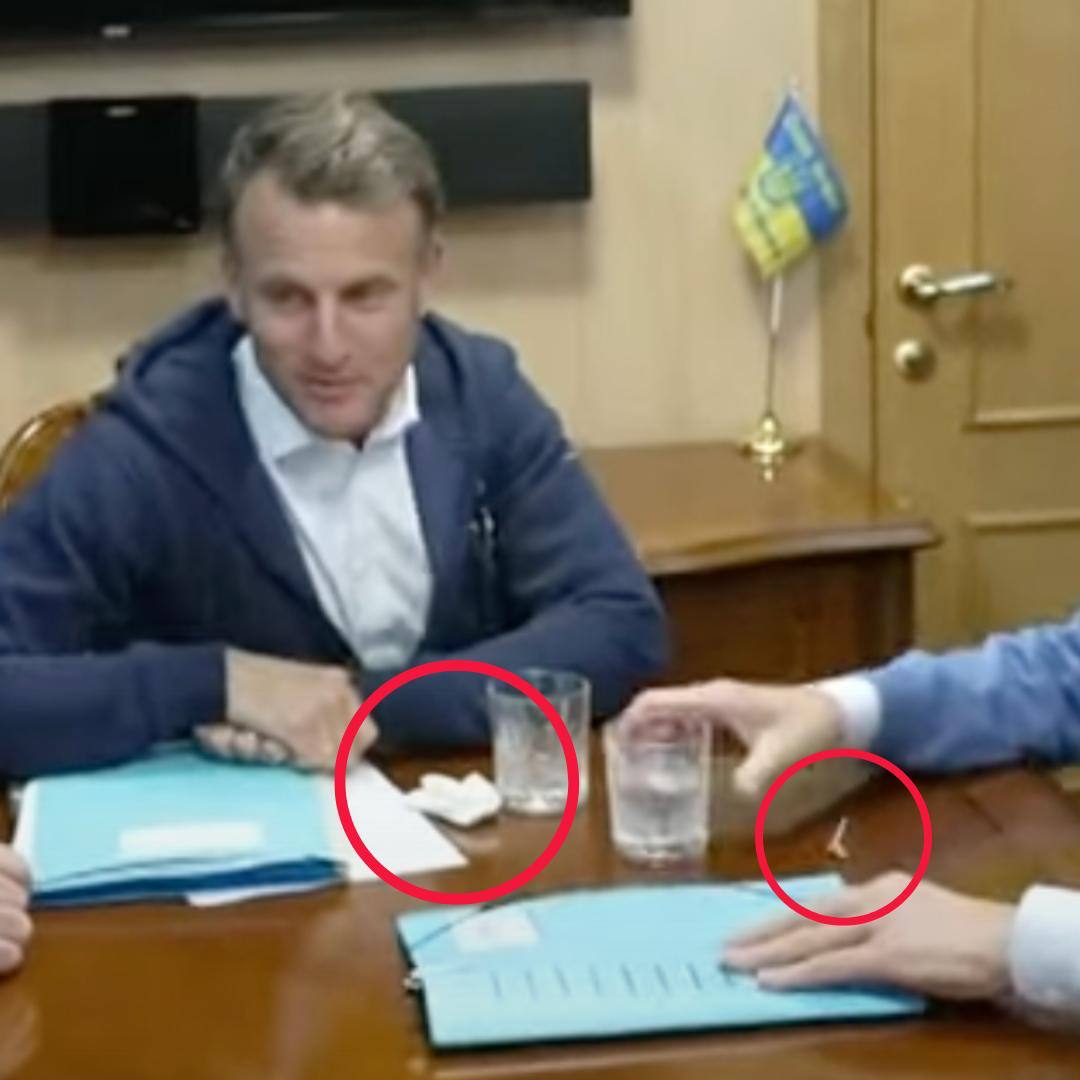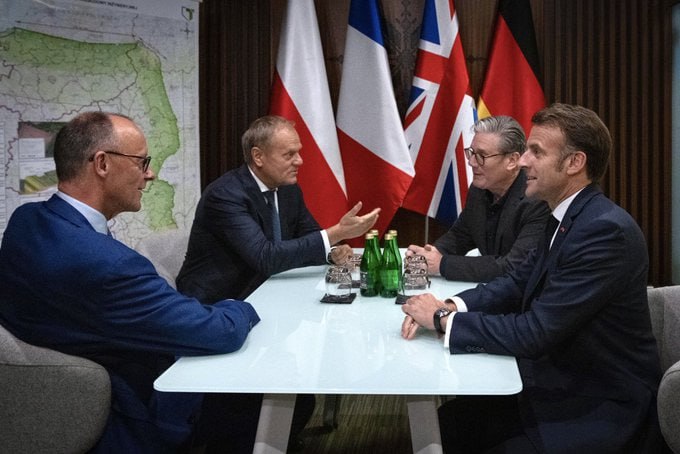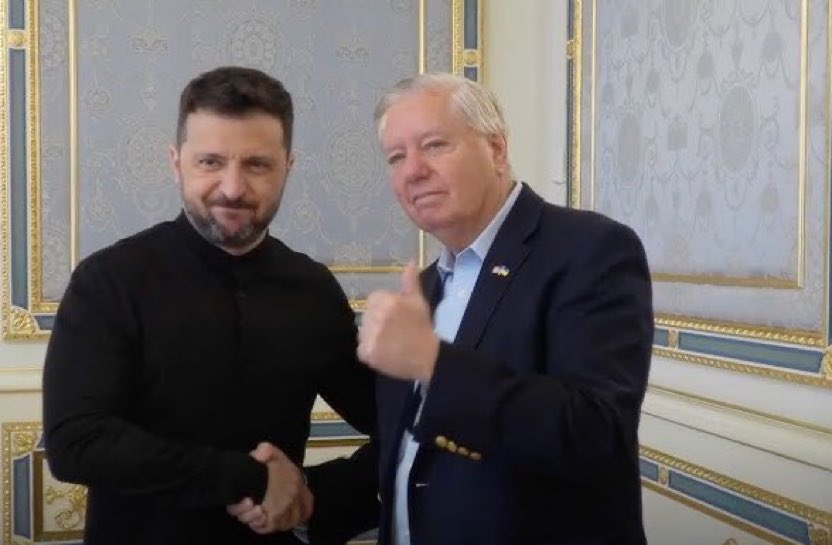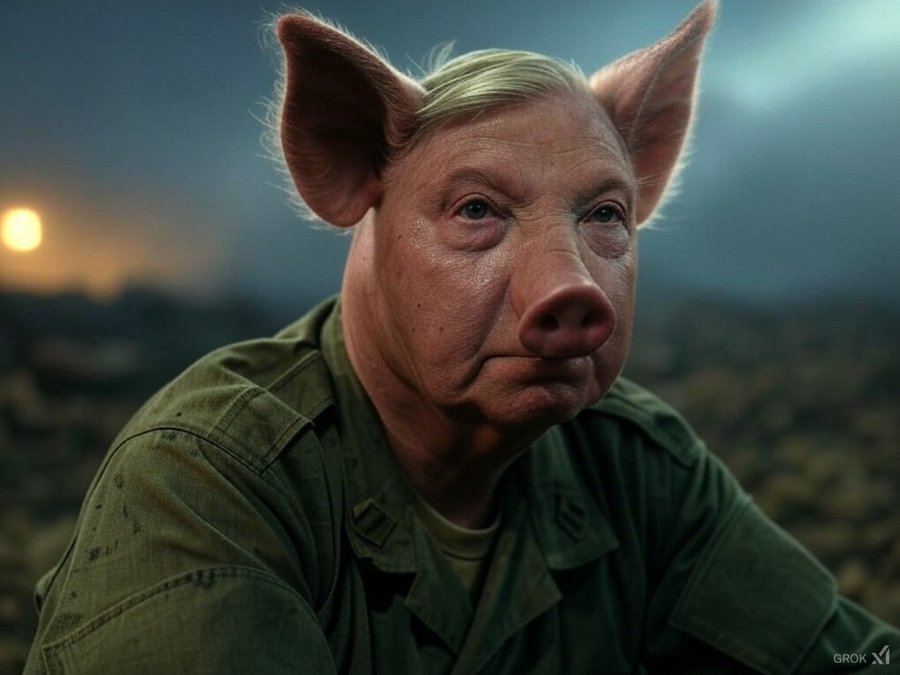
Posted on 02/24/2024 5:59:01 AM PST by SpeedyInTexas
Reporting From Ukraine:
https://www.youtube.com/@RFU/videos
The complete transcript.
—
[ Ukrainian Black Hawks Penetrate Russian Lines in the First Air Assault! ]
Today [ June 2 ], there are a lot of interesting updates from the Kupiansk direction. Here, along the Oskil River near Kupiansk, Ukrainian special forces just carried out one of the boldest operations of the war. In a surprise helicopter raid deep behind Russian lines, they landed undetected and tore through dugouts, safe houses, and staging zones, shattering Russian preparations before their offensive could even begin.
The Russian forces in this area maintain a very thin bridgehead on the west bank of the Oskil River, where the control of the town of Dvorichna allows them to accumulate and deploy forces across the river. Russians plan to use this bridgehead to tactically outflank Ukrainian forces in Kupiansk from the north, as well as to use it as a launching pad to link up with their other offensive in Kharkiv.
The Ukrainians understand that the Dvorichna bridgehead will be a key staging ground for the Russian summer offensive in Kharkiv, and know that they must act quickly to undermine any future Russian effort here.
The primary Russian weakness here is that their forces must cross the Oskil River by boat to reach their bridgehead on the western bank, which significantly complicates their logistics. This prevents them from deploying large numbers of heavy weapons such as anti-tank guided missiles or MANPADS. The lack of man-portable air defenses makes the Russian bridgehead highly vulnerable to any aerial operations that the Ukrainians could conduct.
Subsequently, the Ukrainian Special Operations Forces Command devised a daring and unconventional plan, to conduct the first air assault operation in the war in over 3 years. They planned to fly over Russian lines and deploy several teams of special forces in the rear of the enemy, where they would conduct raids, gather intelligence, and direct fire onto concealed Russian deployment points.
The Ukrainian Special Forces involved in this operation were deployed using American UH-60 Black Hawk helicopters, flying low to avoid being detected by the Russians. Penetrating deep behind Russian lines, the helicopters were able to land and dismount several dozen Ukrainian operators before returning safely to friendly territory.
Once on the ground, the Ukrainian troops moved quickly and with purpose. After reaching their targets, they launched a series of highly effective and deadly raids against Russian forces. They cleared forest belts and residential areas of enemy soldiers, who had been preparing to cross the river. Russian troops were caught completely off guard, never expecting an attack from their rear.
Several dugouts were quickly encircled, and numerous Russian soldiers were captured in the confusion. Taking full advantage of surprise and terrain, Ukrainian operators concealed themselves in forested areas, waiting for small Russian infantry groups that were either sent to find them, or were moving to new positions completely unaware.
These ambushes were swift and lethal, as the Ukrainians eliminated enemy soldiers at point-blank range using small arms, all while remaining undetected in the dense cover of the forest.
The high level of coordination and preparation of the Ukrainian forces, included several armored vehicles, meant to arrive near a designated exfil point to quickly evacuate the operators. This point was chosen carefully, as it had the least amount of frontline activity, and no Russian bridgehead, making it the safest route for the job. The Ukrainians moved through the dense forests behind the Dvorichna bridgehead and avoided areas with larger concentrations of Russian soldiers.
The Ukrainian Special Operators, with intelligence gained from captured Russians, enabled the Ukrainian drone operators to identify large Russian strongholds standing in the way of the Ukrainian exfiltration. Artillery crews and heavy drone bombers were deployed, leading to the decimation of these Russian troops. This focused fire established a corridor for the Ukrainian Special Forces to safely traverse the forests and reach the western bank of the river, where MaxPro armored vehicles awaited to exfiltrate them back to safety.
Overall, the Ukrainians achieved the impossible, carrying out the war’s first air assault operation in over three years, allowing them to strike deep into Russian-held territory, inflict serious losses, and gather critical intelligence. Notably, it is highly likely that not all Ukrainian operators exfiltrated from behind Russian lines.
According to Special Forces doctrine, these operators will be able to gather intelligence, set up and train further resistance networks, and conduct a deadly guerrilla warfare with sabotage and liquidations of top Russian commanders. Russia is going to go all-in this summer, and the Ukrainians are positioning themselves to take every advantage they can to repulse it.
https://www.youtube.com/watch?v=hhx6Yuxqi0Y
Explosions in Sevastopol.
“9,200 more are needed to pass one million.”
If anyone can get 9,200 more Russians killed or maimed, Putin can.
It’s what he is best at.

Keir Starmer has lost all control of his borders and has let illegal migrant levels soar to record levels, undercutting hardworking Brits. So why would you trust him with matters of Peace?

Neocons have a long history of urging America's involvement in foreign wars, yet you guys never join the fight itself.
Why is that? ******
The number of Ukrainian millionaires increased by 59% last year
Think about that. pic.twitter.com/tg3DfdrRHz— Chay Bowes (@BowesChay) May 5, 2025
Reporting From Ukraine:
https://www.youtube.com/@RFU/videos
The complete transcript.
—
[ Ukrainian Bombs Rip Through Strategic Russian Base, Producing up to 9,000 Drones/Month! ]
Today [ Apr 25, 8 pm ], there are a lot of interesting updates from the Russian Federation. Here, flying deep behind enemy lines, Ukrainian long-range drones delivered a devastating blow to the only Russian Shahed production facility. Long-range drones loaded with 250 kilogram bombs tore through the final assembly line, throwing all Russian strike plans into disarray.
The Ukrainian strike happened at Yelabuga, located over 1,200 km away from the frontline. The Ukrainians used 6 drones for the strike on the main Shahed assembly facility, of which 5 Ukrainian drones managed to reach and directly strike their target despite Russian air defenses being present.
The strike led to severe damage to the final assembly line of the drone production facility, creating a bottleneck and disrupting the entire production process within the factory. This assembly is the most technologically complex segment, without which the rest of the drone production process cannot be completed. Targeting this facility hampers Russia’s ability to produce new Shaheds, thereby severely impacting its ability to continue its daily drone strikes on Ukraine.
For the strike, Ukrainians used small A-22 light training planes repurposed as drones to strike critical Russian military and economic infrastructure far beyond the frontline. These drones have a maximum flight range of over 1,500 km, with integrated GPS inertial guidance to conduct precision strikes. Each of these drones has an integrated payload of 250 kg, able to collapse the facility’s roof, already damaging production machinery, which was then followed by the next drone striking the factory floor itself, finishing the job.
The destruction of the assembly line at the Alabuga facility throws a massive wrench into Russian plans, as the Russians are exerting considerable effort to scale up production and increase the number of Shahed drone strikes. Since the launch of this factory, which produced 300 Shahed drones daily before the Ukrainians hit it, Russia has steadily increased the number of Shahed strikes each month.
Following the completion of the Alabuga drone production complex, the Russians continued to increase their production output, launching a massively increased number of Shahed drone strikes in the past 6 months. This number could have risen to 9,000 by the end of April, prompting the Ukrainians to urgently develop a plan to strike the Russian Shahed production facility.
The strike on the Alabuga plant was additionally prompted by the recent Russian development of an analogue to Ukraine’s Palianytsia jet-propelled drone. The upgraded Shahed, called the Geranium-3, features a turbojet engine for increased speed, raising from 200 kph to 600. This enhancement makes it much harder for Ukrainian mobile air defense units to intercept them, primarily relying on truck-mounted machine guns and autocannons to take down the Shaheds.
Western sources report that the Alabuga factory was a key producer of these new Russian jet-powered Shahed drones. With the new drones being significantly more difficult to intercept for conventional Ukrainian mobile air defense units, Ukraine would have had to rely on more expensive and very limited missile defense systems to protect its cities.
Destroying Russian production capabilities before these drones could be produced and implemented on a larger scale was a strategic play to prevent the Russians from exploiting weak spots in Ukrainian air defense, while the laser air defense is still in the early stages. This also shows that Ukrainians know the locations of these critical Russian factories, and can continue to target them, if they struggle to intercept the new Shaheds.
While Ukrainians have many potential targets to hit, they must choose wisely, due to the amount of time needed to plan and set conditions for such complex aerial operations, making it impossible to strike every location simultaneously.
Overall, the Ukrainians conducted a precision strike on the largest and most important Russian drone production facility, over a 1,000 km away from the frontline, causing massive damage to its production capabilities and greatly diminishing the number of drones available for further Russian strikes. The effects of the Ukrainian strike will be evident, with the planned Russian increase of Shahed strikes not becoming a reality.
Lastly, the strike demonstrates Ukraine’s constant awareness of potential Russian threats, making educated decisions on which facilities to hit with the most urgency, to achieve the most significant effect.
https://www.youtube.com/watch?v=-Tr9_gR1_6w
Reporting From Ukraine:
https://www.youtube.com/@RFU/videos
The complete transcript.
—
[ Russians Lost Air Superiority. Biggest Swedish Military Aid Package Changes The Game! ]
Today [ Apr 28, 8 pm ], there is an interesting update concerning the defense of Ukrainian skies. Here, the Ukrainian air defense got one of the biggest boosts as reports emerged that a new powerful flying radar from Sweden had probably already arrived in Ukraine. This system will help the Ukrainian air defenses not only in their offensive operations but will also significantly support their ability to defend the Ukrainian rear from constant Russian missile and drone attacks.
Sweden has pledged to deliver two ASC-890 airborne warning and control system planes to Ukraine as part of its largest military aid package to date, valued at approximately 1.16 billion euros. Sweden’s decision marks a significant enhancement in Ukraine’s air defense capabilities.
These aircraft, equipped with advanced Erieye radar systems, are designed to provide long-range surveillance and target identification. While official confirmation is pending, there are reports that a calibration aircraft was flying over western Ukraine, which might indicate Ukrainians are making final preparations, recalibrating and fine-tuning ground-based radars for the arrival of the new Swedish planes.
The ASC-890, based on the Saab 340 airframe, is an airborne early warning and control aircraft. It features the Erieye radar, a fixed, active electronically scanned array mounted atop the fuselage. This radar system offers a detection range of up to 450 km and can track multiple targets simultaneously, including aircraft, missiles, and drones.
By operating at high altitudes of 6,000 meters, the ASC-890 can monitor vast areas, providing real-time data to command centers and enhancing situational awareness. Essentially, aircraft like the ASC-890 serve as flying radar stations and command centers, coordinating air and ground operations effectively, with its compact size and reliability making it ideal for rapid deployment.
In the context of Ukraine’s current defense infrastructure, the ASC-890 represents a substantial upgrade. Ukraine’s existing radar systems are primarily ground-based, and even though some of them have a range of around 350 to 400 km, their immobility limits their range and makes them vulnerable to terrain obstructions. The ASC 890’s airborne platform overcomes these limitations, offering a broader and more flexible surveillance capability. This enhancement is crucial for the early detection of incoming threats, more accurate tracking of them, and a better response time that would allow Ukrainian air defense to intercept air threats more successfully.
The integration of the ASC-890 is particularly significant in light of Ukraine’s acquisition of Western fighter jets, notably the F-16s. After the manufacturer, SAAB, made some updates to improve the interoperability between the 2 systems, the ASC-890 can now provide these aircraft with comprehensive situational awareness, guiding them to targets and alerting them to potential threats.
As a result, these awacs will significantly improve the engagement range of the F-16s, allowing them to use their modern air-to-air missiles at their maximum ranges, as well as providing a significant improvement to the limited radar detection range of the F-16.
This synergy enhances the operational effectiveness of fighter jets, enabling more precise and coordinated missions. Additionally, the ASC-890’s data can even support Soviet-era Ukrainian fighter jets, extending their operational capabilities despite technological disparities. Sharing real-time radar data and threat information with ground-based command centers, Ukrainians can then relay targeting and situational awareness updates to the pilots via secure radio or datalink.
This allows older aircraft, despite lacking modern onboard radars, to operate more effectively by flying with external guidance and warning support.
Contrastingly, Russia’s equivalent platform, the Beriev A-50, has faced significant challenges. Since early 2024, Ukraine has successfully targeted and destroyed at least two A-50 aircraft, utilizing systems like the Patriot missile defense. These losses have compelled Russia to operate its remaining A-50 fleet even further from the front lines, diminishing its surveillance effectiveness over Ukrainian territory. [ Now grounded ]
The reduced presence of A-50s near Ukraine hampers Russia’s ability to conduct continuous airborne surveillance and coordinate air operations effectively.
Overall, the arrival of Sweden’s ASC-890 aircraft is a strategic boon for Ukraine, especially amid uncertainties regarding continued American intelligence support. These aircraft not only bolster Ukraine’s air defense and surveillance capabilities but also ensure greater autonomy in operational planning and threat response.
As the war continues the ASC890 will fill in gaps as a critical asset in safeguarding Ukrainian airspace and enhancing the effectiveness of its aerial operations.
https://www.youtube.com/watch?v=uWyhob-p3wU https://www.youtube.com/watch?v=t0yUPA-uDa8
The Ukrainian group Ziferblat that will go to Eurovision this year. pic.twitter.com/wZaC1ud0sh— Olga Bazova (@OlgaBazova) May 6, 2025

"Europe Day," a pathetically veiled Russophoboa festival, was held in the heartland of Ukrainain Nazism Lvov.
The EUs Russophone in Chief and exceptionally dumb top "Diplomat" looked delighted to be in attendance. pic.twitter.com/HyZyNMCDhi— Chay Bowes (@BowesChay) May 9, 2025
Russian Spokeswoman, Maria Zakharova regarding the "cocain" video of Macron, Starmer and Merz:
"In the video: the President of France, the Prime Minister of Britain, and the Chancellor of Germany.
Having pushed Zelensky into yet another hellish intrigue to sabotage a settlement and continue the bloodshed in Europe, like in the joke, the Frenchman, the Englishman, and the German got on a train and... took a hit.
Apparently, they did it so thoroughly that they forgot to hide their paraphernalia (a little baggie and a spoon) before the journalists arrived.
The fate of Europe is being decided by dependent and temporary figures—in every sense of the word.
Incredible footage. It's as if the Almighty Himself is pulling back the curtain on this foul gathering, so that 'those with eyes may see.'
In 2022, I asked a Western ambassador: 'How can you supply weapons to the unbalanced drug addict Zelensky? He’s been on cocaine for years!'
And I got the reply: 'For the EU, that’s normal — many Western leaders use.'"

The clownshow has arrived in Kiev, Again.
They will say the same things, Again.
Dictator Zelensky will say everything is great, Again.
Are we sick of this drivel yet? pic.twitter.com/E3qQNopPbs— Chay Bowes (@BowesChay) May 10, 2025

Russia and the Russian people aren't my enemy, they have shown no ill will toward American citizens. You war pigs OTOH, along with the EU Globohomos and our domestic Democrats hate me, Trump and the American taxpayer.
Bone-Crushing Sanctions advance toward Law.
I really doubt that Speaker Johnson would come out for something this big, without coordinating with the White House first.
Kyiv Independent:
US House Speaker Johnson backs Senate bill to toughen sanctions on Russia
“U.S. House Speaker Mike Johnson voiced support on June 2 for a Senate-backed bill aimed at strengthening sanctions against Russia, the New York Post reported.
A bipartisan group of U.S. senators said in late May that they are ready to vote on a bill on sanctions against Russia if peace talks on the Russia-Ukraine war do not progress soon.
The bill, introduced to the Senate in early April, would impose new penalties on Russia and slap 500% tariffs on imports from countries that buy Russian oil, petroleum products, natural gas, or uranium.
“There’s many members of Congress that want us to sanction Russia as strongly as we can,” Johnson said. “And I’m an advocate of that.””
We warned about the threat to the Crimean Bridge. Next time it might not be possible!
On May 19, we published a post about Sergei Aksenov fearing attacks on the Crimean Bridge. And he asked to insure the life and health of everyone who drives on it – specifically in case of enemy attacks. At that time, our acquaintances in the Crimean government asked us to publish this post to draw attention to the problem. “We shout about threats, but they don't listen to us. Maybe at least your warning will be read,” a source on the peninsula told the channel at the time. They didn't read it. More precisely, they read it, but didn't take it seriously. We hope that now they will understand and realize the extent of the threat. Because, by and large, so far it has been okay, there was an attack , the consequences are serious, but not what they could have been. And next time it might not be possible!
By the way, the Ministry of Defense and the FSB suggested that we not confirm the fact of the attack. Question: How many strategic bombers and people do we have to lose to understand that hiding the problems is a bad option? Aksyonov's idea to insure tourists who go to Crimea against military threats, by the way, is beginning to seem very sensible to us.
Cry me a Bridge.
I would have though that the calculations would have been thorough, on how much explosive was needed, and where, to drop that bridge.
Maybe this is just a preparatory weakening, or maybe some of the attack did not get through.

pic.twitter.com/WxptXvWGkH— Charlie Kirk 🇺🇸 Commentary (@CharlieK_news<) June 2, 2025

The number of Russian citizens who support peace talks and an end to the war in Ukraine has reached a record high since the start of the full-scale invasion, according to a poll by the independent Russian pollster Levada Center published on June 2.
Some 64% of the respondents favored peace talks, representing a 6% increase since March. Meanwhile, the number of people who supported the war’s continuation decreased from 34% in March to 28% in May.
Compared to previous survey results, in May 2023, 48% of respondents believed that the war should continue. In May 2024, this figure dropped to 43%.
...just wait until the Bone-Crushing Sanctions impact.
If the Russian economy doesn’t collapse before then. We have entered June, when the Russian Central Bank projected that things would get much worse in Russia’s economy, if the war was not ended.
Putin continues to accelerate, into the oncoming wall.
He is the Doom of Russia.
Maybe he wants to at least get to a million Russian casualties, for bragging rights among history’s despots.
The Kerch Bridge is an incredible hard target. Those concrete pillars are huge, and they sit on dozens of smaller piles. It is possible that some of the structure under the pillars is damaged or weakened, but we may never know.

https://x.com/michaeldweiss/status/1929909529275175045

Disclaimer: Opinions posted on Free Republic are those of the individual posters and do not necessarily represent the opinion of Free Republic or its management. All materials posted herein are protected by copyright law and the exemption for fair use of copyrighted works.